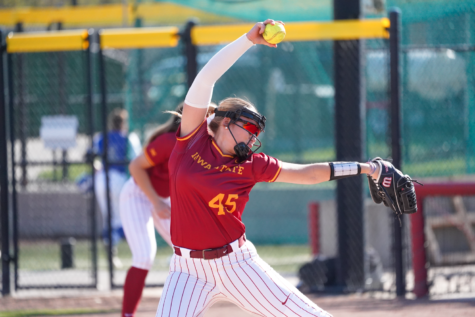Dishin’ the Rock …Old School
August 22, 2000
It existed from 1967 to 1976. It was flashy. It was innovative. It was the ABA. For nine full seasons the ABA was the bad brother the NBA didn’t want you to know about. Where the NBA offered big business, the ABA offered renegade, flying-from-the-seat-of-your-pants management. The NBA’s stars were burly, territory-consuming giants. The ABA stars were mid-sized players that spent the majority of their time living above the rim. The NBA was teaming with players playing out the twilight of their careers. The ABA drafted college kids. The ABA could just never pull itself up by the bootstraps. It was a league that was known for its almost complete lack of media exposure. The teams played in front of conspicuously small crowds. Most ABA teams were plagued by serious attendance problems. As a result, the history and memorabilia of this league is mostly word-of-mouth. But that word is a colorful one. The ABA will forever be associated with its red-white-and-blue ball. It was a league that pioneered the three-point shot. And the Afros that were worn were almost as famous as the players. One player that had both the Afro and talent was Julius Erving. “Dr. J” as he is more affectionately known, was drafted after his third year at UMASS to the New York Nets. This was a huge score for the ABA. Erving was widely regarded as the best player in college basketball. “The Doctor” was rumored to have hands so big, he could place his thumbs at the bottom of a basketball and then have the tips of his middle fingers touch at the top. Erving electrified fans for five seasons. He was twice named the league MVP. He was a three time scoring champ, winning two ABA Championships with the New York Nets. Erving’s final accolade from the ABA came when he was recently selected as the ABA’S All-time MVP. But Erving was far from the only superstar to run the floors of the ABA’s tiny arenas. Connie Hawkins spent some time with the Harlem Globetrotters and the Los Angeles Lakers, but he began his career in the ABA. He spent only one year at the University of Iowa before turning pro. He is currently a member of the Basketball Hall of Fame. George “Ice Man” Gervin played for one of the ABA’s bright spots, the San Antonio Spurs. The Ice Man was known for his high-flying acrobatics, particularly his one-hand, underhand, flip-of-the-wrist lay-up. Gervin is also a member of the Hall of Fame. Moses Malone epitomized the ABA’s tendency to draft young kids with bouncy legs. Malone was the first man (or kid, depending on your definition) to be drafted straight out of high school. Malone laced up his sneakers in an ABA locker room when he was only 17. The ABA had a coach named “Slick” and players named “Fatty” and “Goo.” It was a league of extremes. Lee Salvage of the Anaheim Amigos loved the three-point line. He once hoisted 26 three’s in a game. This in a time when the ABA’s counterpart didn’t even have a three-point arch. Stero Johnson of the Houston Mavericks was the definition of streaky. He once averaged 31 points over two games. The next night he failed to score. The night after that, Johnson scored 62. Although the money was better in the NBA, many players played for the ABA because of its liberating, fast-paced style. Many players of the ABA considered themselves “rebels” fighting side-by-side, trying to make the struggling league work. The crowning moment of the ABA might have come in the 1976 All-Star Game. The league was going under fast. ABA hierarchy knew the ’76 season would most likely be its last. It was decided by players and brass alike to find a way to go out with the a bang. The ABA’s All-Star Game was regarded as its most recognizable feature. The league of flash knew how to put on a good show. A simple, yet ingenious idea was thought of as the best way to go out in a blaze of glory. Why not stage a dunk contest at half time of the All-Star Game? Such a thing had never been done before in professional basketball. The players would be judged on artistry, height and fan participation. The best of the best were selected for the competition: George Gervin, his teammate Larry Kenon, Artis Gilmore, the 7 foot 2 center for the Kentucky Colonels, David Thompson, the 6 foot 4 swingman for the Denver Nuggets and Dr. J. All knew it would come down to Thompson and the Doctor. Thompson wowed the 17,000 plus in attendance with his cupped windmill dunks. But the night belonged to the Doctor. The stadium was abuzz when Erving began striding off his steps from one end of the court to the other. When he was finally ready, he took off, Afro bouncing all the while. When his feet reached the free-throw line, Dr. J leaped and came down 15 feet later. Not only had the ABA just showcased the first-ever dunk contest, but those in attendance had witnessed the first-ever successful dunk from the free-throw line. The ABA met its demise at the end of that season. The Indiana Pacers, Denver Nuggets, San Antonio Spurs, and New York Nets all headed to the NBA. The remaining three teams had no choice but to fold. The memories of the ABA and its players however, will always be etched in fans minds.
















